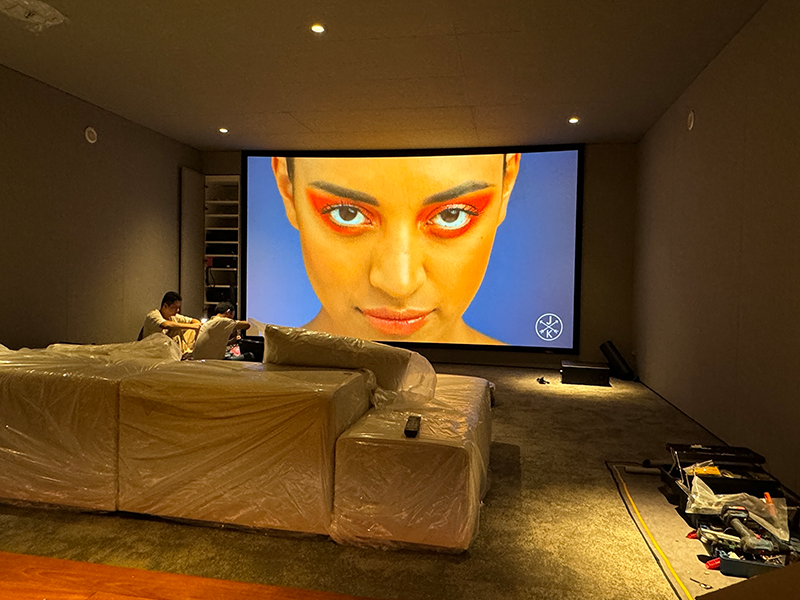
1. Core Parameters: Understand Jargon in 3 Minutes
Gain: A “Brightness Magnifier” That Isn’t Better When Higher
Gain measures light reflection capacity (1.0 for perfect diffuser), while half-gain angle (viewing angle when brightness drops to 50% of peak) is more critical:
- 1.0-1.3 Gain: Ideal for home/meeting rooms, balancing brightness and 160° wide viewing angle
- >1.5 Gain: Prone to “bright center, dark corners”, only for small spaces with single viewing spot
Quick formula: Actual brightness = Screen gain × Projector lumens (e.g., 1.1 gain + 1000 lumens = 1100 lumens effect)
Size & Aspect Ratio: Match Precisely to Avoid Waste
| Aspect Ratio | Application Scenario | Calculation Tip |
|---|---|---|
| 4:3 (1.33:1) | Business presentations | Width = Diagonal × 0.8 |
| 16:9 (1.78:1) | 4K movies, gaming, HDTV | Mainstream home choice |
| 2.35:1 | Wide-screen movie enthusiasts | Requires anamorphic lens |

2. Material Selection: Scenario Determines the Best Choice
| Material | Features | Application | Budget Reference |
|---|---|---|---|
| White Plastic | Diffuse reflection, wrinkle-resistant | Outdoor camping | 80-inch < $30 |
| Glass Fiber | Glass fiber base, 30% flatter | Home theater, small meetings | 100-inch $45-$75 |
| Anti-light | Blocks ambient light (needs real optical structure) | Daytime living room viewing | 100-inch > $150 |
3. Common Mistakes to Avoid
- White wall = free screen: Uncalibrated walls cause grayish dark areas, wasting 50% projector performance
- Cheap anti-light screens work: Sub-$75 “anti-light” screens use gray paint, dropping gain to <0.5
- Ignoring installation height: Ideal height: screen center at eye level, ≥30cm top black border
4. Customization Advantages
- Tested to JB/T 7809 standard, ensuring low VOCs
- Customizable size/aspect ratio
- Free on-site survey for optimal light adaptation


